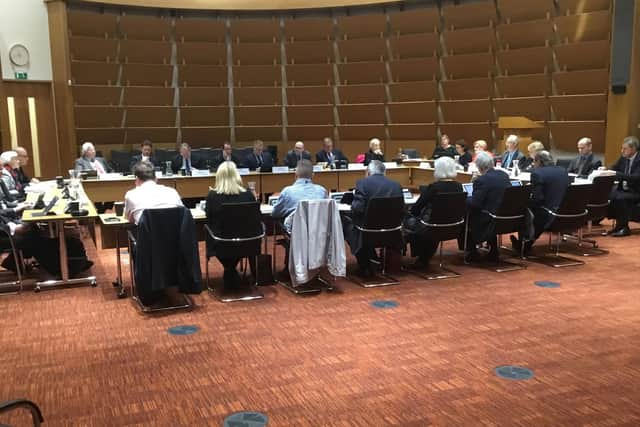Buckinghamshire Council's community board scheme said to have 'missed a golden opportunity'
and live on Freeview channel 276
Community boards are acknowledged in the Shadow Executive's report as “a key component part of the business case that the Government approved” and their concept at least has broad support.
Their initial purpose is to offset fears that a more centralised unitary authority might lead local communities to feel distanced from the decision-making process, but going forward many hoped that the scheme would also allow more power to be devolved to town and parish councils.
Advertisement
Advertisement
However, two aspects of the community boards final design have caused frustration that was expressed both at the meeting on 3 December when the decisions were announced, and subsequently to this paper.


At the Shadow Executive meeting, Chiltern District councillor Fred Wilson firstly requested an amendment to the fact that only Buckinghamshire Council members will be able to vote on issues at community board meetings, excluding town and parish councillors as well as other invested parties such as Thames Valley Police representatives.
Pointing to the fact that a 10-week consultation involving 525 respondents found that 92% thought that town and parish councillors and other community representatives should have a vote, Mr Wilson described the final outcome as “too much centralism, too little localism.”
He went on to submit a further amendment suggesting that “the chair person for a community board should be elected by that community board” and not by Buckinghamshire Council, as has been decided.
Advertisement
Advertisement
Both of councillor Wilson's amendments were rejected by the Shadow Executive.
Shadow Executive member, councillor Warren Whyte, responded to councillor Wilson at the meeting with the following statement:
“I heartily disagree with the premise. This is about the new Buckinghamshire Council working locally and in succinct community boards so the elected councillors to the council will be meeting regularly to discuss the priorities and issues in that locality which is the right thing to do.”
We spoke to county councillor and member of the Shadow Overview and Scrutiny Committee Steven Lambert about the setup of the community boards. He said:
Advertisement
Advertisement
"If the only ones that can vote are the unitary councillors then what's the point of anyone else being there? It's just hot air.
"It's not very democratic. It is the council telling the community what's going to happen.
"I think it's disappointing. They've missed a golden opportunity to really engage and empower communities."
The former mayor of Aylesbury, town councillor Mark Willis, echoed those sentiments, saying to us:
Advertisement
Advertisement
"To not allow the parish and town councils to have their full voice and to demonstrate their opinion with a vote is missing a huge opportunity and it devalues the partnership I was hoping we were going to have between us and the unitary."
A further member of the Shadow Overview and Scrutiny Committee, councillor Robin Stuchbury, summarised the concerns:
“The decision of the executive could be said to signal the type of partnership the new Buckinghamshire Council will be seeking and it doesn’t suggest it’s going to be one of equals.”
The community boards, of which there will be 16 in Buckinghamshire, are described in the Shadow Executive's report as “informal bodies of the Council and therefore non-decision-making. This means that legally community boards will make recommendations for formal sign-off by relevant decision-makers.”
Advertisement
Advertisement
This paper has tried to contact Councillor Whyte and Shadow Executive leader Martin Tett for further explanation of the executive committee's decisions regarding community boards, but we had not received a response at the time of publishing.